Google Smart Speakers: Features and Operation
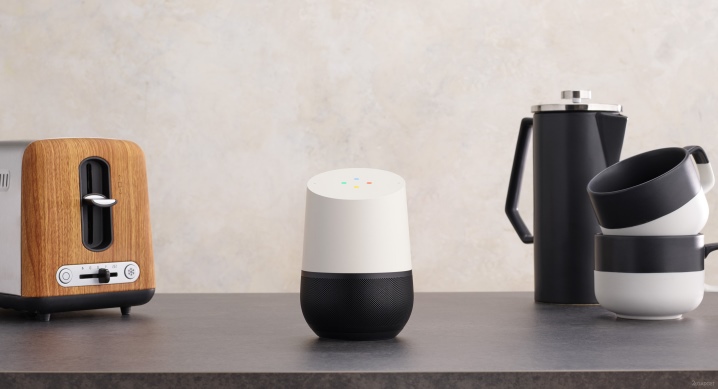
"Smart" speakers Google Home seriously compete with other devices with voice control: access to advanced technologies and media services gives them a lot of advantages, and with the advent of the Russified version, the attractiveness of devices has increased even more. An overview of the station with an assistant, its functions, settings helps to appreciate all the possibilities of this technique. The full-size Google Home model and its compact Mini-version may well be a good addition to the interior of a modern house or apartment., will significantly facilitate interaction with other devices based on the Android platform.
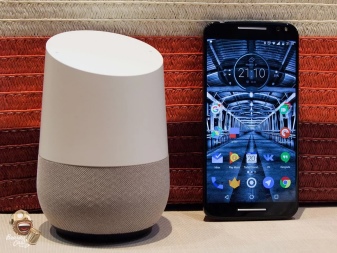

Peculiarities
The premiere of the smart speaker Google Home took place in 2016, and the Mini-version of the device appeared in 2018.
Initially, the technique was addressed to those who dreamed of embodying the idea of a “smart home” in their home, but over time, its merits were appreciated not only by advanced users of the company's services.
Officially, sales of the Google Home column in Russia are still not conducted. You have to purchase it from intermediaries or in the American and European official store of the Internet giant.
"Smart column" characterized by compact dimensions: 96.4 mm in diameter and 142.8 mm in height... The bottom speaker mount has a magnetic base. The stand is not slippery, the device is quite stable. In the upper part there is a microphone and 4 LEDs on the body. The full-size version has a physical call button, presented in 7 colors.
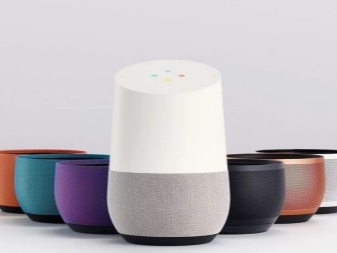
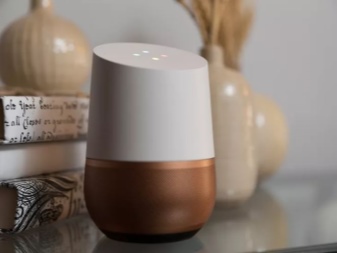
The mini version is more compact... The Google Home Mini has a diameter of 98mm and a height of 42mm, a rounded shape and a compact stand at the bottom. The weight of the device does not exceed 173 g. The model is available in 3 colors: coral, dark gray, light gray. The upper textured surface is covered with fabric, under which there are LED indicators and a touch panel; this equipment does not have a physical call button.
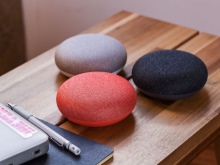

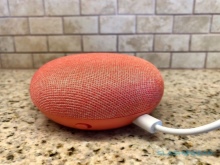
Among the distinctive features of the Google Home series devices are:
- extensive functionality;
- direct integration with the voice assistant Google Assistant;
- compatibility with Android OS devices;
- support for the IFTTT interface to create a unified system of smart devices;
- linking to a Google account - you can check calendar entries, learn about letters, create notes;
- speech recognition;
- high search efficiency;
- choice between male and female voice for the assistant;
- the highest quality sound in its segment;
- excellent assembly, reliability of equipment, compliance with standards.
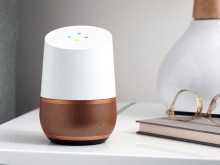
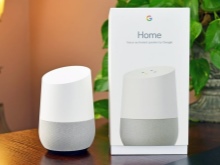
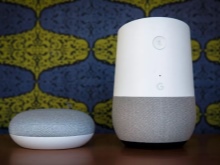
Not without small drawbacks. Russification of the voice assistant has to be done in manual control mode. In addition, some commands still have to be given in English. Errors also occur when playing music, the playback of tracks is interrupted when the signal is weakened.
Package contents and functions
The equipment package is quite minimalistic. The station with Google Assistant is equipped with a Wi-Fi module, has 2 speakers and needs constant power from the network.
This is a stereo system that allows you to provide high-quality reproduction of music tracks and sound files.
The built-in microphone and backlight create a comfortable working environment. The fully functional model comes complete with a manual and a network cable.


The "smart" speaker Google Home Mini has only a wire for connecting to an outlet, without any additional components. There are no connectors on the case: all control is carried out by voice, when the microphone is disconnected from the button, it will be impossible to call the device.
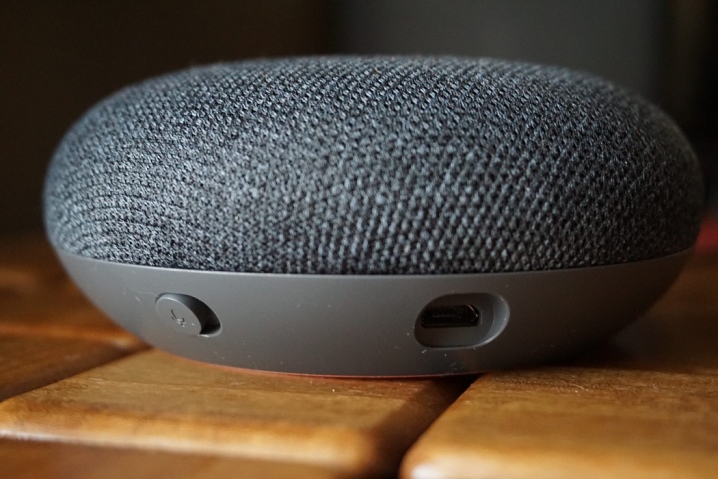
Among the useful functions of "smart speakers" Google Home are the following points.
- Chromecast compatible. When you connect a “smart speaker” with this system, you can control your TV with Smart-functionality by voice without using the remote control.
- Music track management. There are some difficulties with recognizing Russian names, but English-language tracks are easy to find. To play music, you need to have a Google Play Music account or broadcast tunes from a smartphone or tablet via Bluetooth.
- Sending notifications... The speaker can send signals to all devices in the Google Home network. You can wake up children in different rooms, bring the family together.
- Using the Tunelin service to listen to the radio. You can choose any option from the thousands of stations available around the world.
- Setting reminders and scheduling. Timer, alarm clock, notebook is now activated by voice. You can also listen to the announced calendar notes, find out the weather forecast, and check for traffic congestion. For family use, the voice recognition feature will help you avoid confusing accounts.
- Google search. Voiced requests receive detailed answers in the form of quotations from the encyclopedia or from Internet sources.
- Game mode support. With the smart speaker, you can play cities or words.
- Calling a taxi. Compatible with Uber.
- Text translation... Integration with Google Translate is supported.
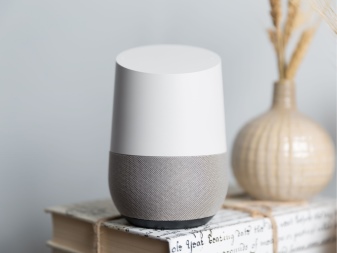
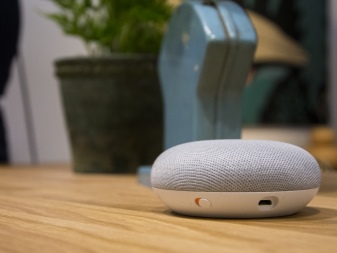
These are the main functions available for use by owners of Google Home smart speakers.
How does it work?
"Smart speakers" Google Home can be easily integrated into the existing system that connects Smart-devices, or become irreplaceable assistants in the use of Google services. You can also use the device as an element of an audio system. Without connecting to an account and a special application, the column will have limited functionality.
After activating all the necessary options, you can call the device through the command: "Ok", "Hey Google", "Google".
A 10m range is enough for the microphone to pick up a command from the other end of the room.


How to setup?
The process of setting up a Google Smart Speaker does not take long. You need to connect the device to a Wi-Fi network, provide it with access to a user account.
After the first start-up, the device will recommend downloading a special Google Home application - it is available in stores for Android and iOS.
Having installed it on a smartphone or tablet, you can proceed to setting up. The speaker must be plugged into an outlet.
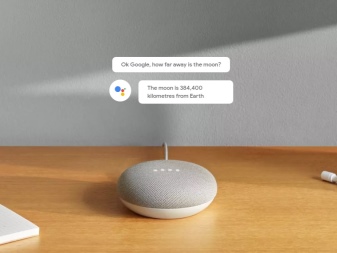
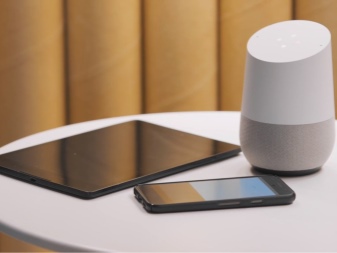
The procedure will be as follows.
- Open the application. Click the "Start" icon on the boot display.
- Sign in to your Google account. After entering your mail and password, it will appear in the list of available for use.
- Find the speaker quickly will help turn on the Bluetooth function on the device... Such a hint will appear in the application. If there is no option, you will have to use a temporary Wi-Fi network for setup. The program will create it on purpose, but it can be done much faster via Bluetooth.
- Wait for the notification that the Google Home column has been detected... Select "Next". Wait for a short beep from the device. If it does not follow, you need to continue the search, otherwise there is a possibility that someone else's column will fall into the coverage area.
- Receive a notification that the equipment is not officially supplied to the Russian Federation... Select "Ok", confirm receipt of information.
- If the system uses multiple Google Home devices, it is worth specifying the corresponding rooms for them in the drop-down list.
- For the smart speaker to work correctly, you need to provide a stable Wi-Fi connection... It must be selected from the list among the available options. Google recommends protecting your home network with a password.
- Choose a language. English, French, Japanese, German are officially available. You will have to Russify the column separately by changing the assistant's settings.First, you still have to determine the base case.
- Configure Google Assistant. Enable search engine permission to process queries and data.
- Select a voice by listening to the sample. Male and female versions are available.
- Allow access to the calendar, specify the exact location. Optionally, link music services. To do this, you need to have a subscription in them or register it.
- Check if the settings are correct, test voice control with a simple command offered by the service. Then complete the procedure.
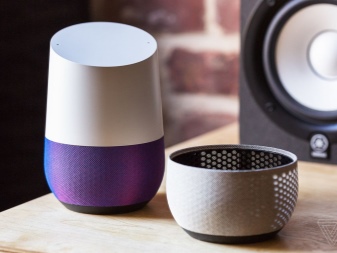
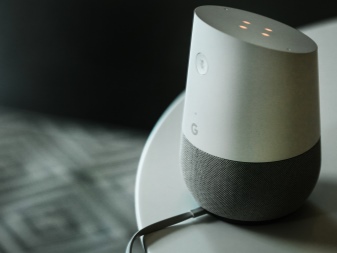
To russify the control of the Google Home column through the built-in assistant, you need to change the language settings.
To do this, in the Google Assistant application or service, select the logo icon in the upper right corner. Then go to the item with the choice of language. You need to set two at once - "English" (United States) and "Russian" (Russia). Sometimes it is possible to activate the option only after transferring the phone or tablet to English-language control.
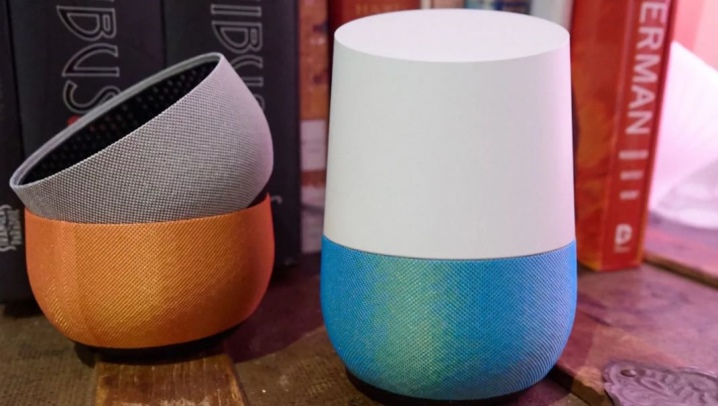
For the speaker to work successfully with other elements of the “smart home” system, you also need to make some changes in the settings menu in the application. In Google Assistant, you will have to select a device, then the "gear" in the upper right corner of the screen and set a new Device Address.
For a complete overview of the column, see the video.













The comment was sent successfully.